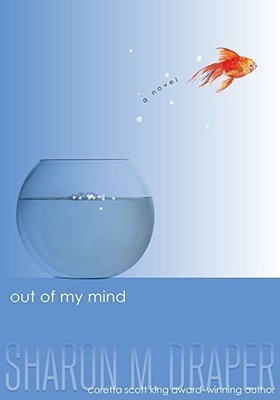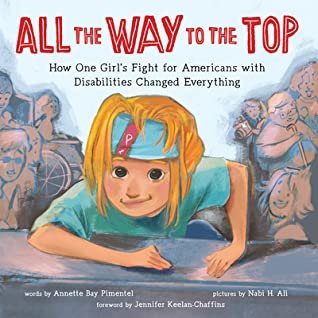Disability Awareness Month
Happy Spring! Before we move on to April, don’t forget that March is Disability Awareness Month. I also saw that both Developmental Disabilities Awareness Month and Students with Disabilities Awareness Month are in March as well. I recently discovered that March is National Noodle Month, too, so lots to cover this month. Disability Awareness Month has been celebrated since 1987, and like all awareness or heritage/history months, it really is just a reminder that disabilities are part of life and our teachings, materials, and classrooms should reflect that. So while we are close to the end of the month, the reminders and materials below are really for every single day.
This year, I have been thinking a lot about people who are immunocompromised, at high risk for COVID and/or can’t safely get vaccinated and how mask mandates are ending and many people seem ready to move on. My child is not yet vaccinated and his daycare is closed today, again, because someone in the center has COVID. So while others are moving on (whatever that means), it is still real for us (even though this is, of course, only a minor inconvenience) and for so many other people. It really demonstrates who we value as a society. I won’t start talking about all of the related ageism because then this post will never end.
Reminders for Disability Awareness Month:
Disability should not be something you “study” once, but rather part of everyday life and teaching students about the world and everyone in it. We make choices with the people, books, videos, and language we use with students everyday. Some of those choices may be unconscious or mostly out of our realm (for example, materials you are provided with from the district etc), but they are still choices.
Person first language vs. identity first language: the language we use often reflects our choices, attitudes, biases, and more. Different individuals and communities have different preferences. As much as you can, ask people how they like to be identified. I prefer person first language with children as I find it more humanizing and they do better with clarity instead of nuance, but there is no hard and fast rule.
Representation matters. Make sure students see people with disabilities going about their lives through your guest speakers, media, books, and more. We invited a brilliant storyteller to our school to introduce our storytelling unit: Anne Thomas. She happened to use a wheelchair and it featured in her story. She also talked to the students about how strangers sometimes perceived her and then treated her as voiceless and only saw her wheelchair. Our students made connections to the stories she shared for months afterward. Children understand what it is like to be denied a voice or only seen a certain way. Anne visited us as an expert storyteller, not as someone with a disability to “teach” us about what it is like and we intentionally framed her visit this way. She shared an anecdote about how at restaurants, wait staff often ask someone else what she would like to eat or ignore her. It’s as if the wheelchair is all people see about her, to the point that they do not register when she is speaking. One aspect of her visit that was challenging was that our school is not wheelchair accessible. We talked to students openly about this and had to make alternate arrangements. They were frustrated we could not host Anne in our own classroom as it was on the second floor and felt that the lack of accessibility was unwelcoming.
Make sure the books and media you share with students are humanizing stories and not ableist framing or representation. Think carefully about who is telling the story and if it is their story to tell. The Disability in Kidlit blog is a really great place to start and to find more books. I recently learned about this amazing database of young adult and middle grade books featuring disability representation. You can find it here: http://yadisabilitydatabase.com. Huge thanks to Julie (@StruckbyStories) for compiling it!
Ask students (and yourself) to answer the question: What is a disability? You can look up a dictionary or legal definition or try something more creative or investigative. We asked our students and they worked in groups to come up with a list of disabilities and an overall definition. It led to some very interesting discussions and realizations. They had reflections on who and what skills or abilities we as a society value.
A Few Book Recommendations (but make sure you peruse the sites I shared above):
Out of My Mind by Sharon Draper: this is such a good book! It is one of my favorite book club books and would also make a great read aloud. It’s consistently popular with students as an independent reading book. One student said this book changed the way he thought about disabilities. Also, as an added bonus, a sequel came out recently. It’s titled Out of My Heart. The main character, Melody, has cerebral palsy and uses a wheelchair and a communication device.
The Girl Who Thought in Pictures: The Story of Dr. Temple Grandin by Julia Finley Mosca. There is so much to learn from Dr. Grandin and this lovely picture book gets that process started. The book also includes a timeline which is such a great tool for young (but really all) learners.
King For a Day by Rukhsana Khan. I haven’t actually read this one, but it is on my list! It is set in Lahore and features a child who is determined to win a kite fighting battle during Basant, the festival of Spring. He also happens to be in a wheelchair, but the story is about his quest to become the King of Basant as a kite fighting champion and how he tries to defend another child from a bully along the way.
All the Way to the Top: How One Girl's Fight for Americans with Disabilities Changed Everything by Annette Bay Pimentel. This is a true story from Jennifer Keelan-Chaffins’s life (she is the author of the foreword to the book) and her activism in support of the Americans with Disabilities Act. My students loved it, especially the suspense and identified strongly with the injustice of being denied rights or access. The book includes a glossary and a timeline, which are always helpful tools.



